In 2024
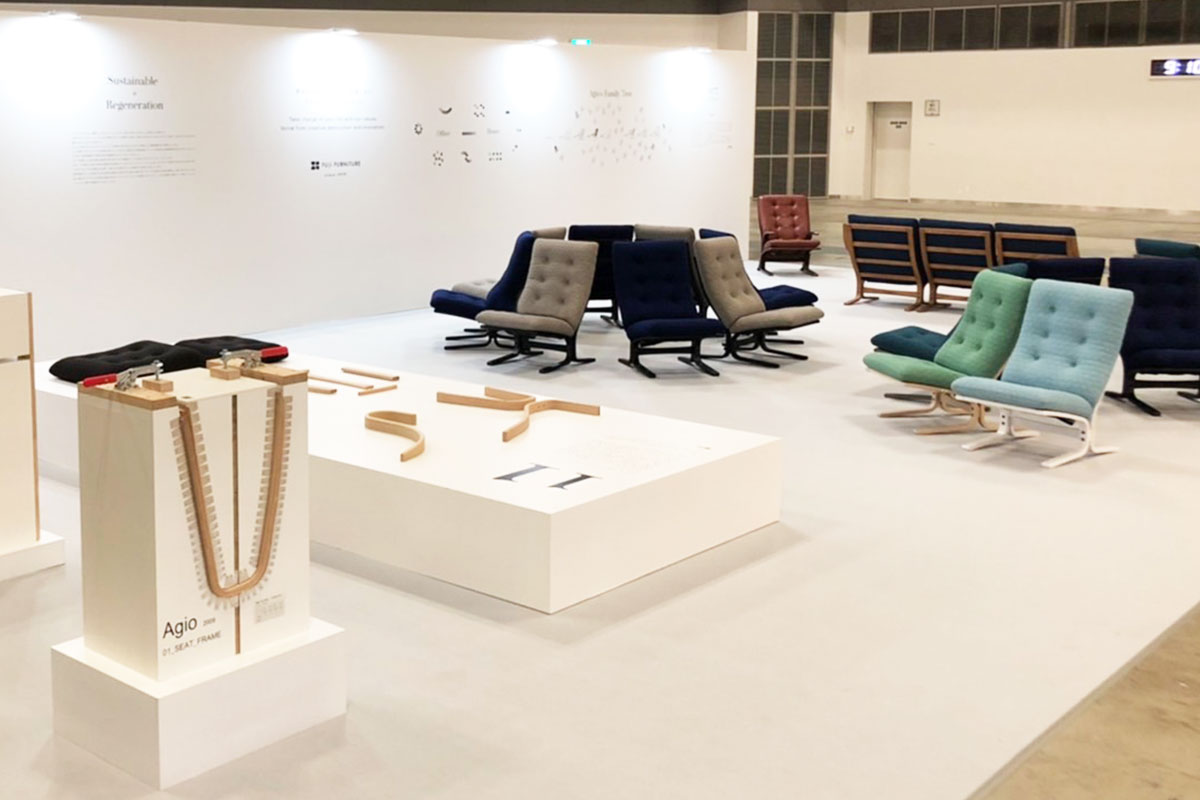
In 2024
Agio, synonymous with FUJI FURNITURE’s molded plywood technology.
From the birth of its prototype, Rosetta, 47 years ago, Agio has evolved as if leading the changing times, repeatedly undergoing numerous derivative items and minor changes.
Looking back at its history, more than 40 products have branched out, centering on seven models from Rosetta to Agio. While changing the shapes of frames and cushions, it consistently conveys a sense of unwavering identity.
Even as global situations and housing conditions have changed, Agio, which has always complemented the interiors of each era, has prompted us to reconsider the fixed notion of home-use furniture in modern times. In an era where changes in lifestyle awareness are rapidly updating the values of “living” and “working” that individuals choose, Agio offers an opportunity to rethink these concepts.
Agio, which has gently accompanied our lives in every era. We will unravel its charm by tracing its roots and propose the future possibilities of Agio.
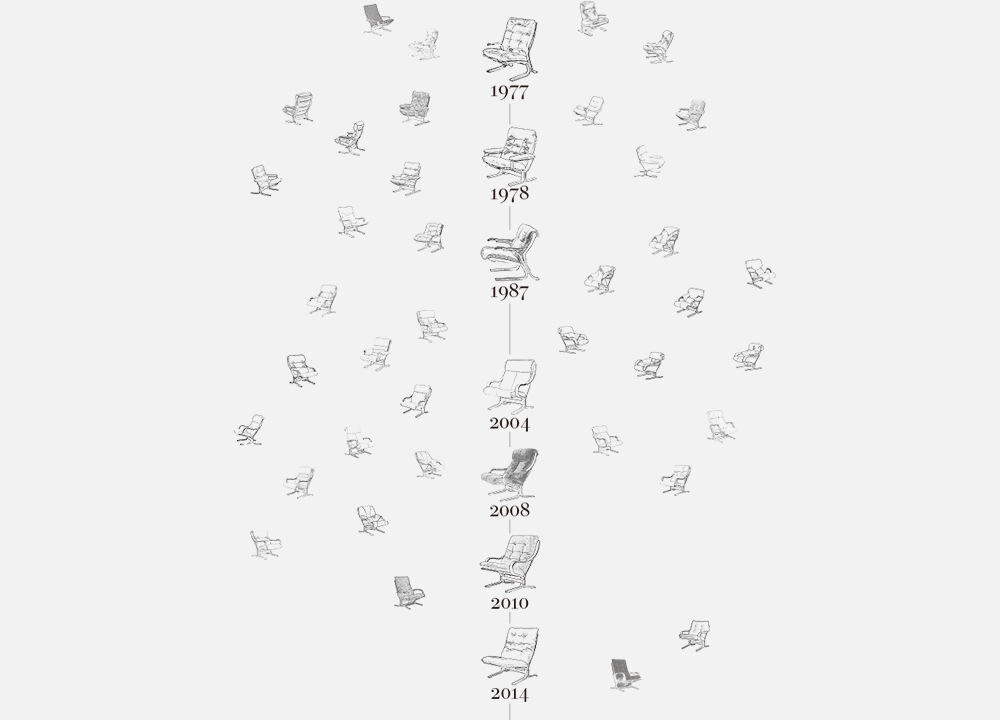
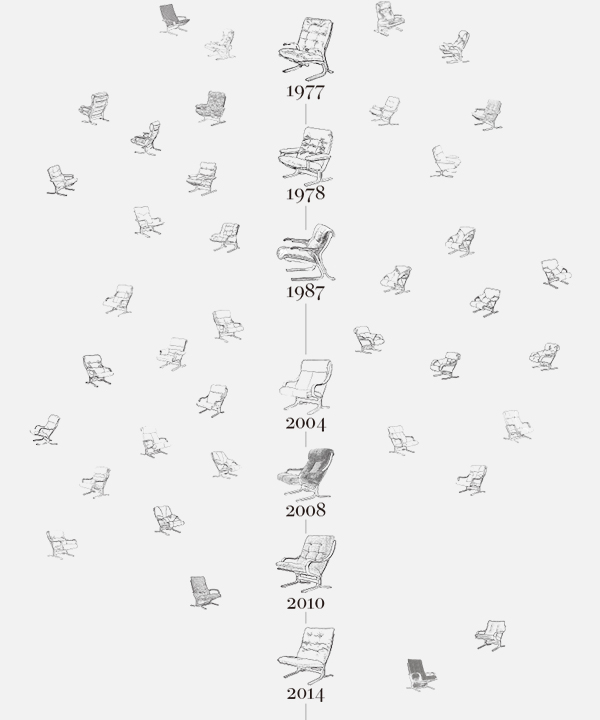
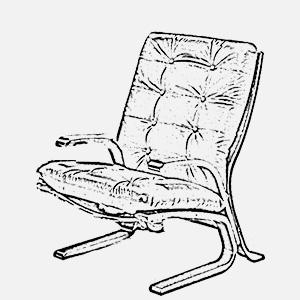

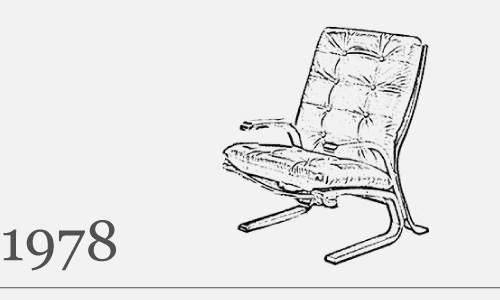
FUJI FURNITURE, founded in 1959.
At the time of its founding, Westernization was progressing in Japan, and FUJI FURNITURE expanded its sales of Western-style furniture, seemingly ahead of that trend.
Subsequently, it became fashionable in housing to have a reception room separate from the living space to welcome guests. The fully upholstered reception sets, which were the main products, became important items supporting the growth of FUJI FURNITURE at that time.
In 1977, seeking further development and turning our attention to overseas furniture, we were influenced by Scandinavian products that used molded plywood technology. Aiming to develop products where the wooden frame would be the main feature, we began working on molded plywood technology.
After struggling with the delicate processing techniques, Rosetta (L00480), which became the prototype of today’s Agio, was born. Rosetta gradually gained popularity and achieved sales second only to the reception sets that were popular at the time.
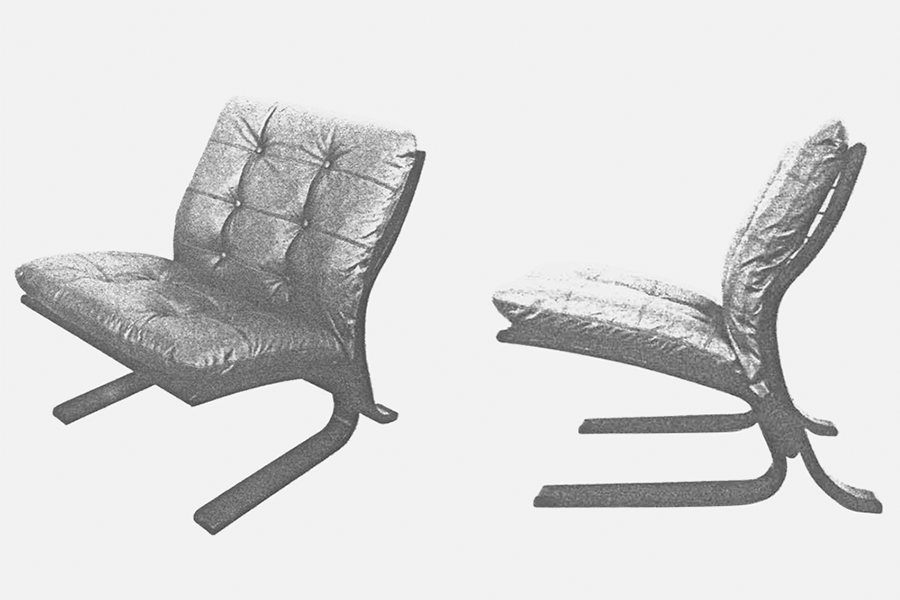


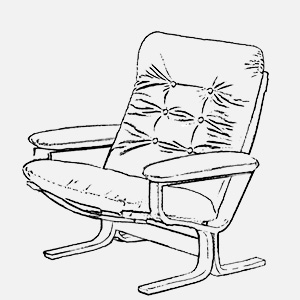
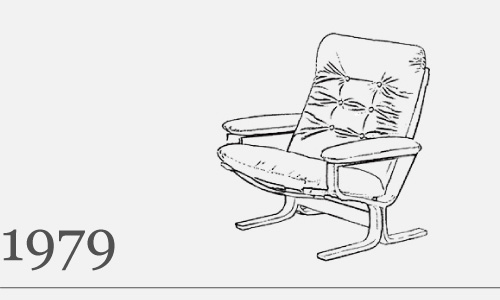
In 1979, Memory (L01070), the successor to Rosetta, was born.
Compared to the initial model of molded plywood, Rosetta—which had short rear legs and frames with little back angle—the second model, Memory, reviewed the shape of the rear legs, making them longer. By shifting the joining position of the back and seat, the back frame became better at supporting body weight, further enhancing the springiness using flexibility.
Additionally, while Rosetta used nylon ropes threaded through holes drilled in the frame as elastic materials, Memory used dedicated rubber plates, making significant improvements in manufacturing.
The frame of Memory was inherited by subsequent derivative items, and its traces remain in the current Agio.
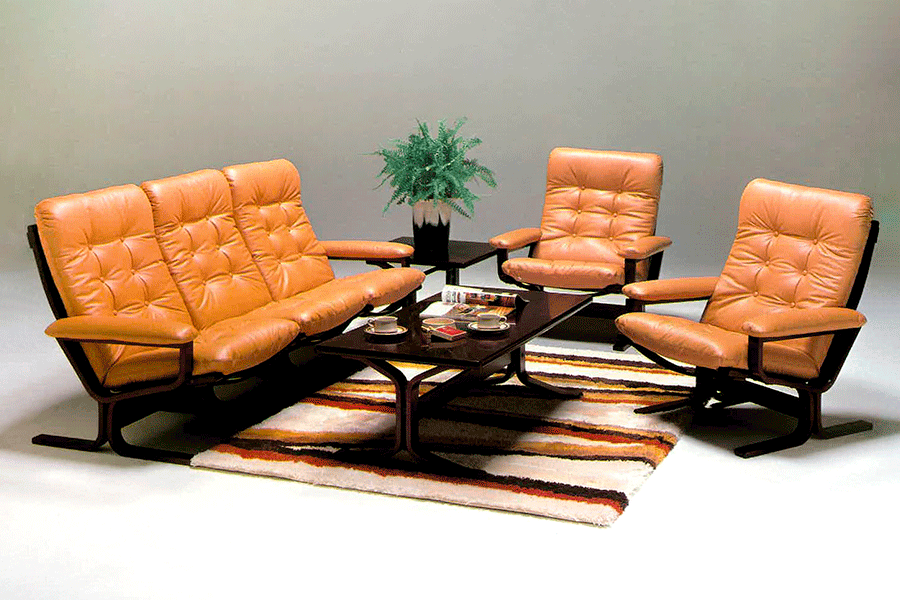
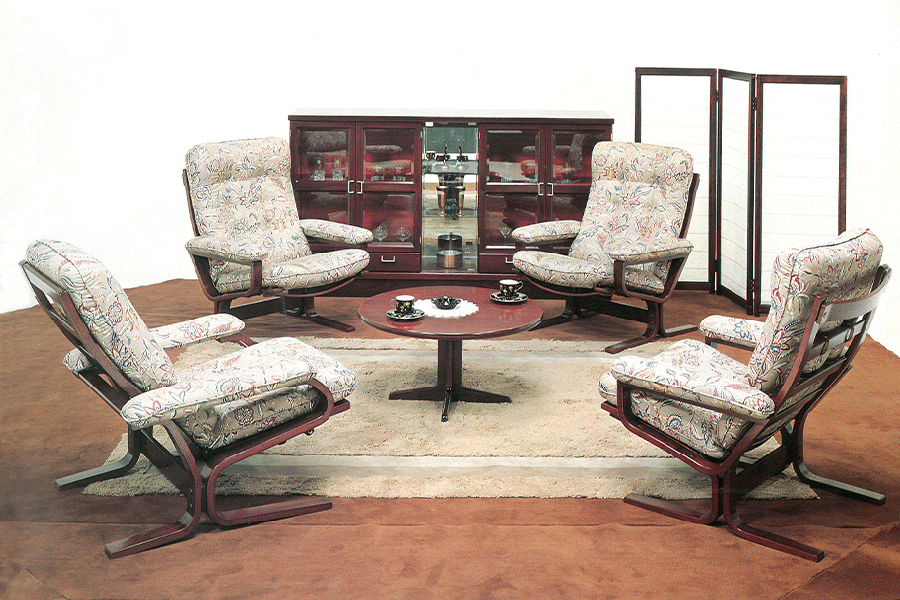
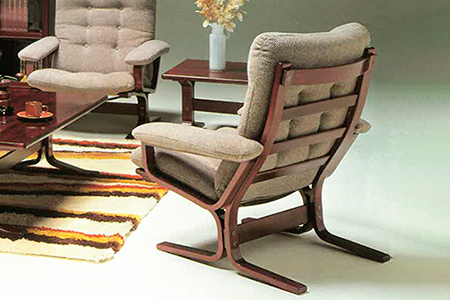
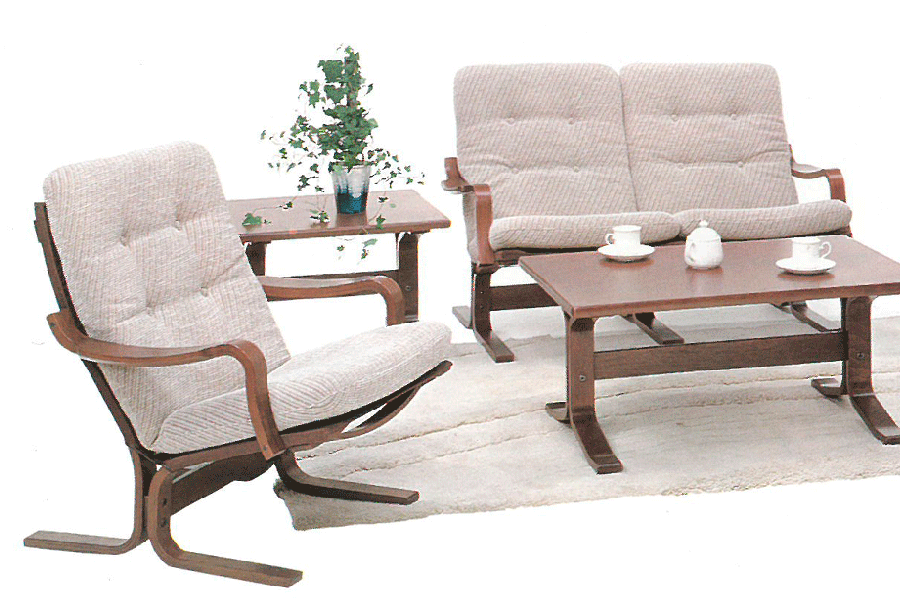
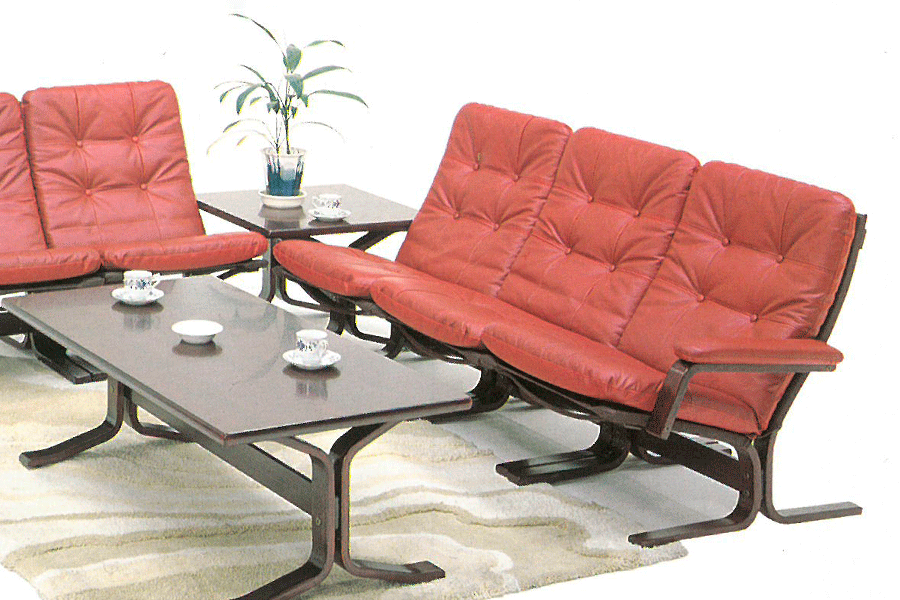
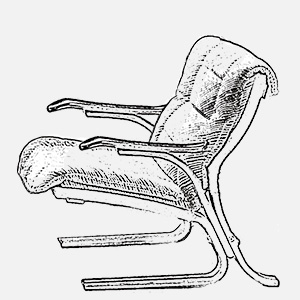

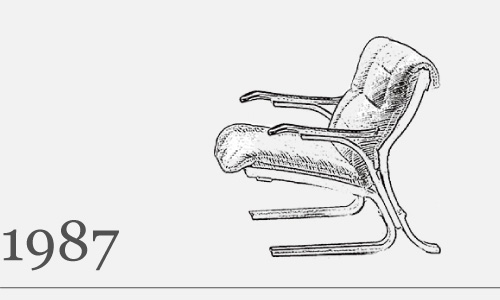
During the period of rapid economic growth, the needs for “authenticity” and “luxury orientation” became widespread, and a richer and more comfortable living environment was sought after.
In terms of lifestyle, houses with flooring increased, and people’s thinking about interiors changed significantly, favoring total coordination of furniture in dining and living rooms.
At FUJI FURNITURE, to respond to changes in people’s preferences, we began handling furniture not only for dining and living rooms but also for spaces like bedrooms and private rooms, evolving into a comprehensive furniture manufacturer.
While the reception sets—which had been hit products since the company’s founding—and heavy, substantial items continued to be popular hits, molded frames like Rosetta and Memory began to fade. The Rosetta type was discontinued with L03160 and consolidated into the Memory type.
After that, we continued to make efforts such as changing the elastic material to canvas and carefully selecting materials to focus on the finish, but we could not regain the momentum we had at the time of release.
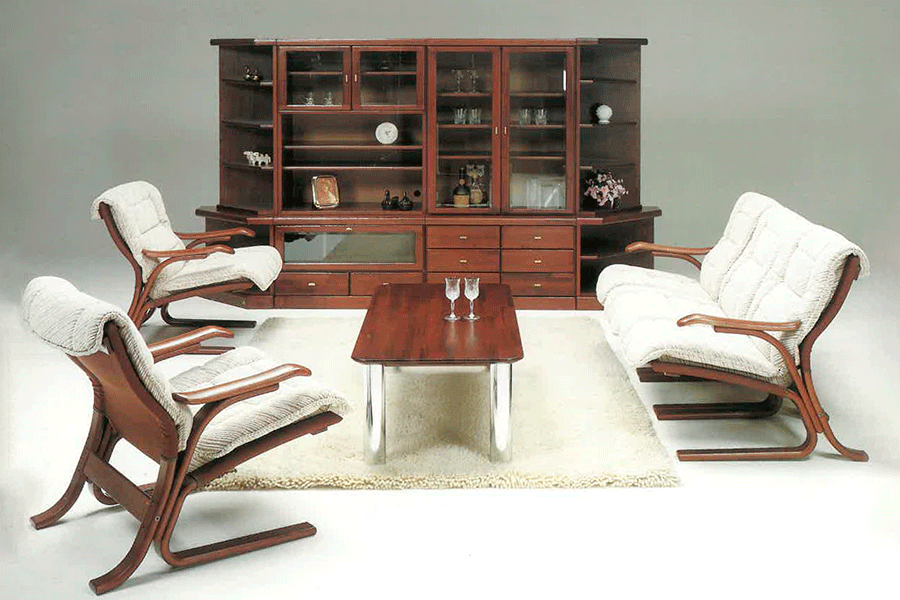
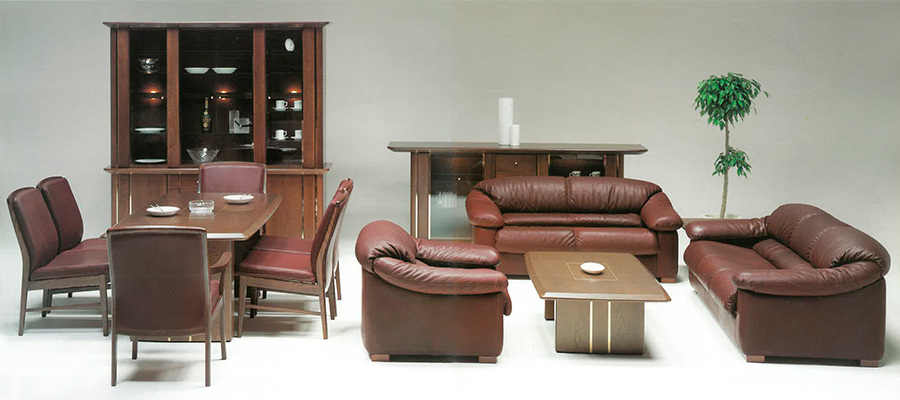

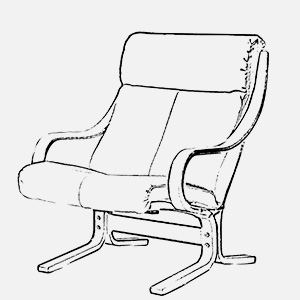

After the collapse of the bubble economy, Japan’s economy rapidly declined, and due to the impact of monetary tightening, the number of housing starts also decreased significantly, which dealt a significant blow to the furniture industry. Moreover, changes in lifestyle and housing layouts progressed rapidly, and our main products at FUJI FURNITURE shifted from reception sets to living and dining furniture.
Furthermore, with the expanding demand for inexpensive overseas-made furniture leading to price destruction in the furniture market, it became difficult to anticipate and respond to the rapidly changing trends in various areas.
In such a situation, the turning point was the L07290. By changing the angle of the curves in the leg parts and adding a seating angle, it was reborn with seating comfort that allowed for more relaxed lounging. Additionally, by offering a lineup with different sizes and functionalities, we gained popularity among customers, and it became a hit item with as many as 11 derivative products.
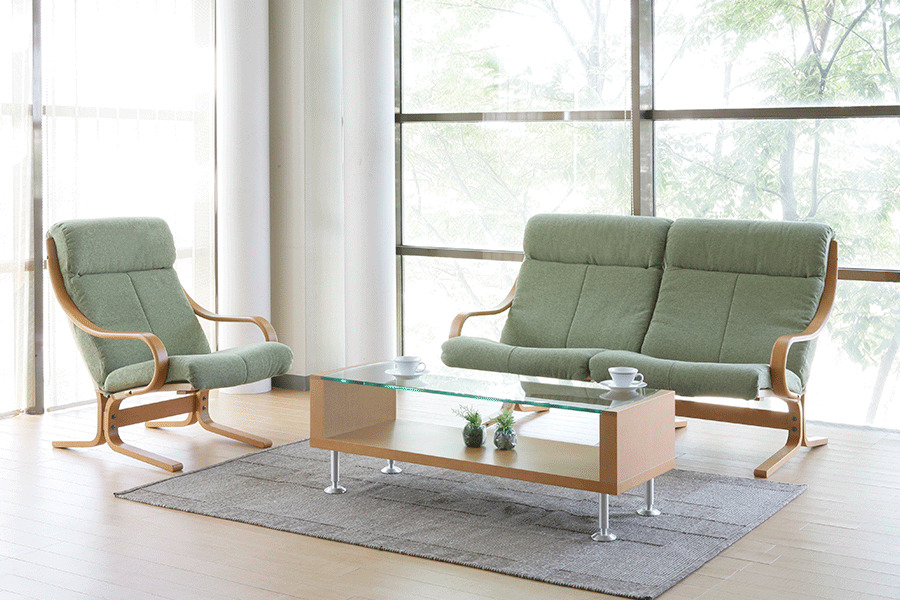
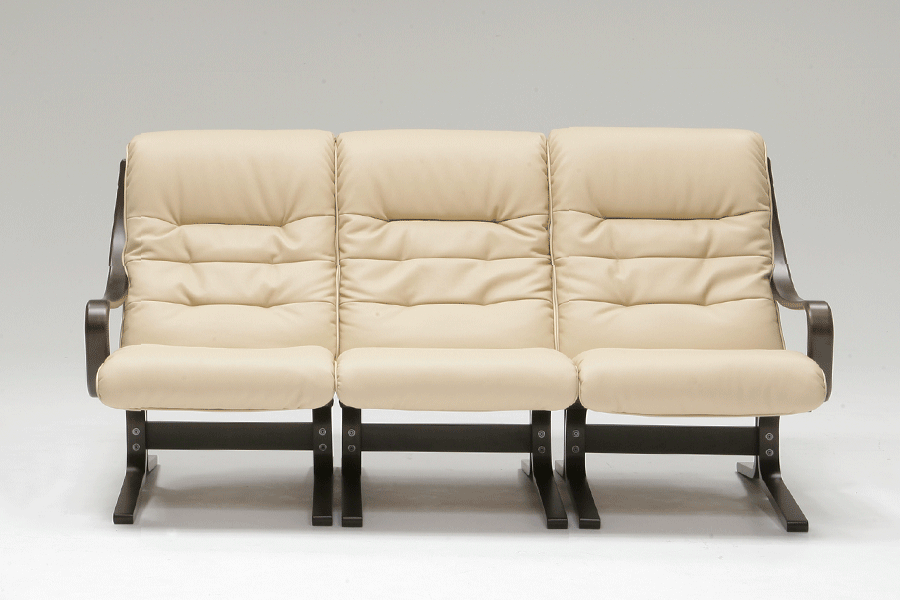
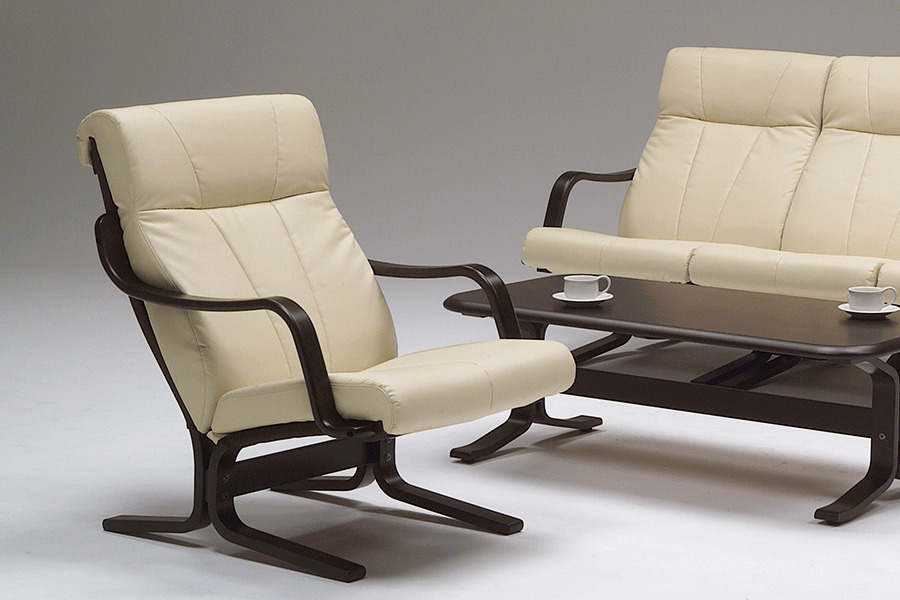
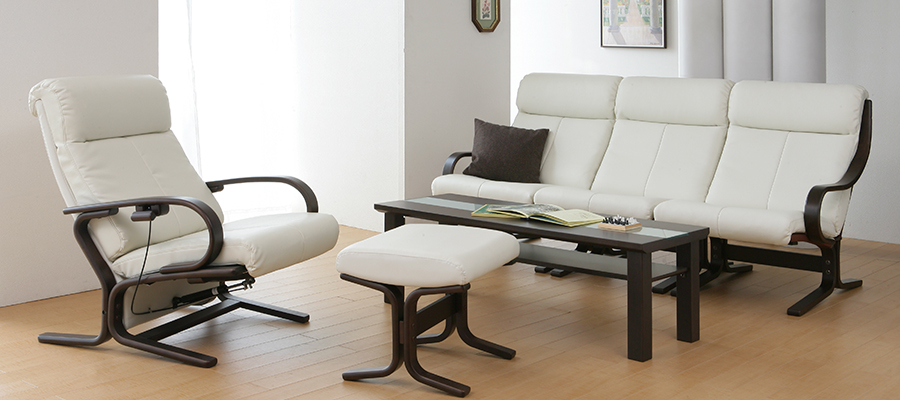
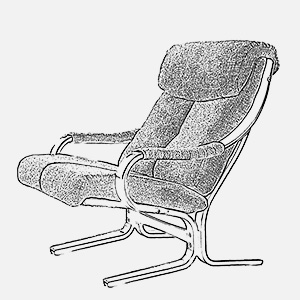

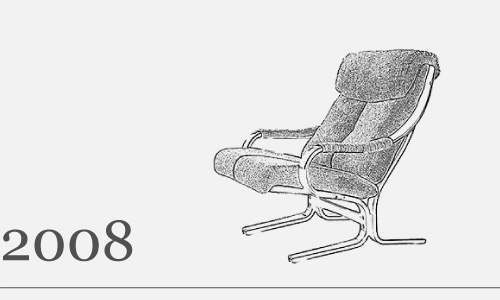
Entering the 2000s, families living in one household became smaller, and nuclear families became more common. As a result, changes occurred in housing layouts, and to make the most effective use of limited space, houses with LD spaces that blurred the boundaries between living and dining areas increased.
In our product lineup at FUJI FURNITURE, products that could be used as LD sets—dining sets that also allowed for relaxed lounging—began to increase.
The L07950, derived from the L07290, further accelerated its popularity by changing the back, which had previously been covered with canvas, to a design that deliberately exposed the wooden spokes. This made it a sofa whose back design could be enjoyed when placed in the middle of a room.
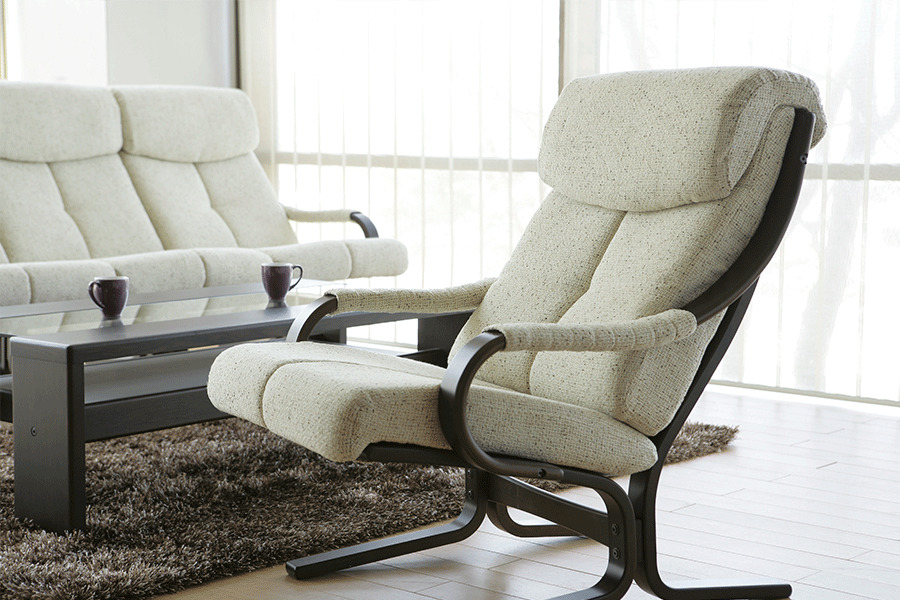
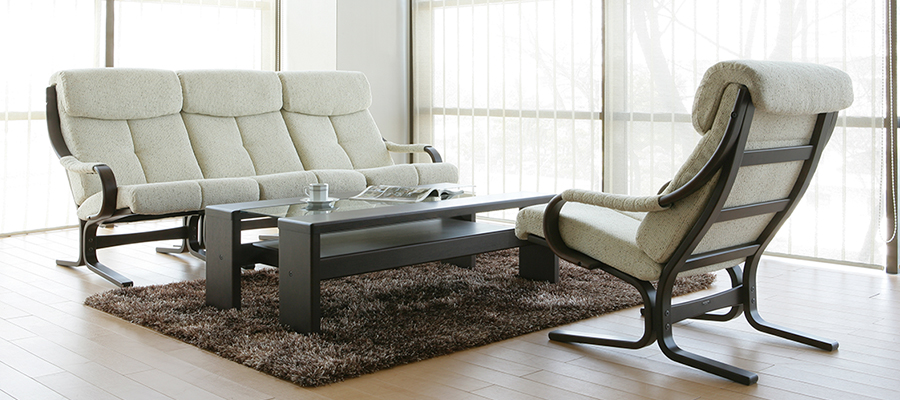

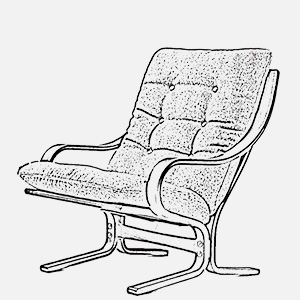
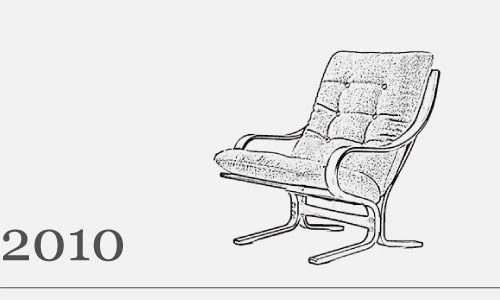
In 2010, the current Agio (L08310) was born.
As environmental awareness increased globally, more people developed a mindset of wanting to use high-quality items for a long time. The separable type Agio was well received for features such as the ability to purchase one seat at a time, the option to connect two or three seats by attaching or detaching the arms, and the ability to replace only the damaged parts. Now, it has become the most popular product among our sofas at FUJI FURNITURE. In 2014, we conducted developments utilizing new materials, such as researching Agio models using carbon materials made by solidifying carbon fibers with resin.
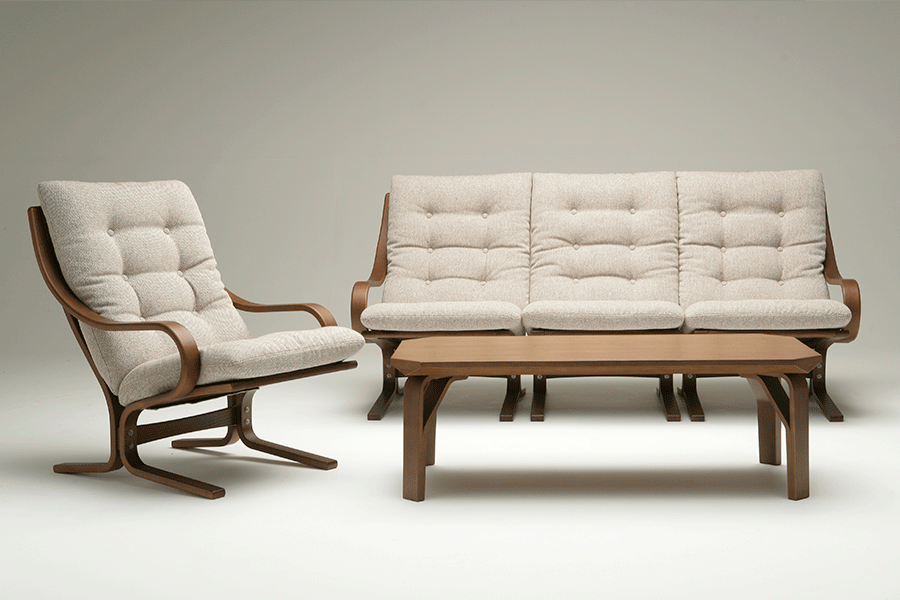
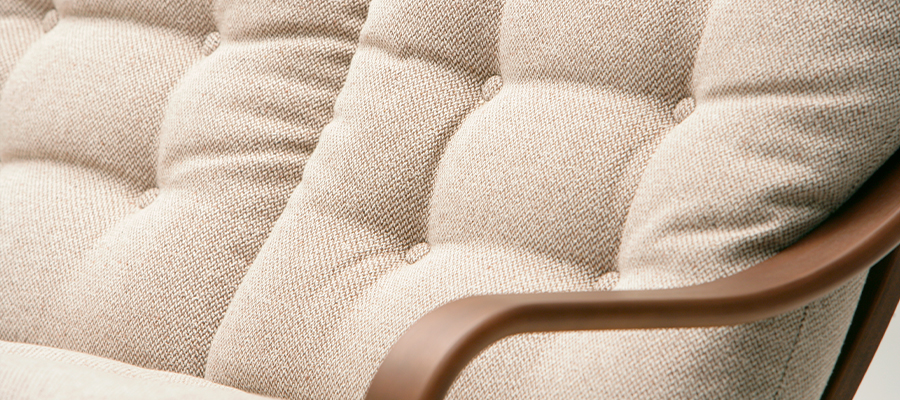
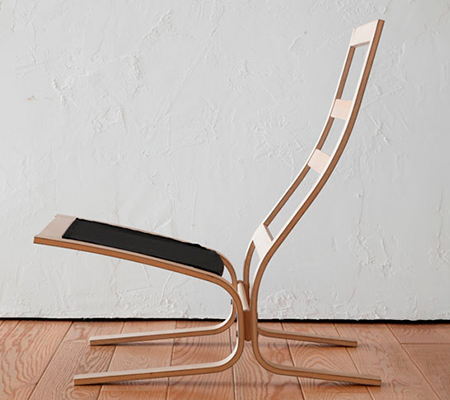



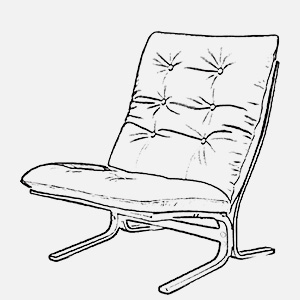

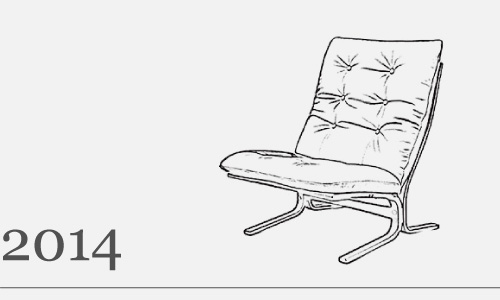
In 2014, the L08670, a coverable version of the L08310, was born.
Until then, it was an upholstered design where the fabric or leather could not be removed, but now, without any change in appearance, the cushion covers became removable. If you choose washable upholstery, you can wash it at home, making maintenance easy. Additionally, since you can purchase only the covers, you can drastically change the atmosphere of the space by changing them. This specification, which allows you to use your favorite furniture for a long time and replace only the parts that need updating, contributes to reducing the burden on the environment.
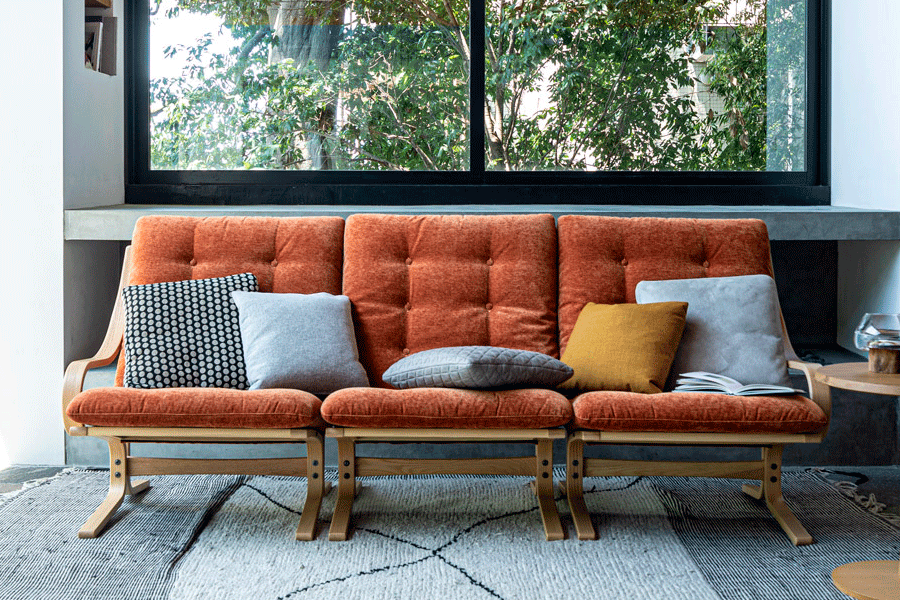
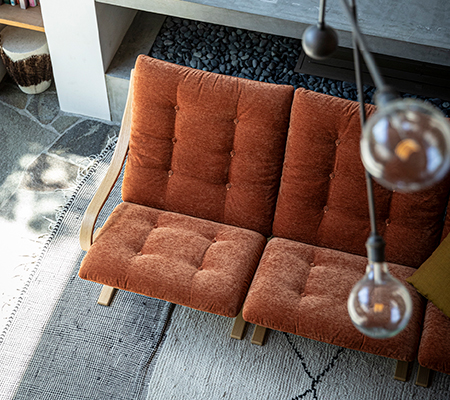
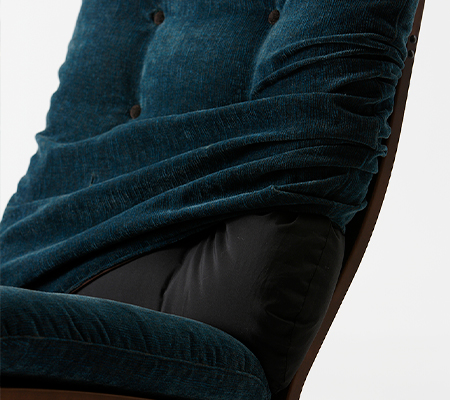
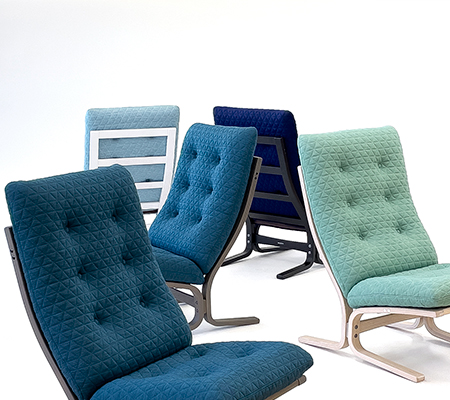
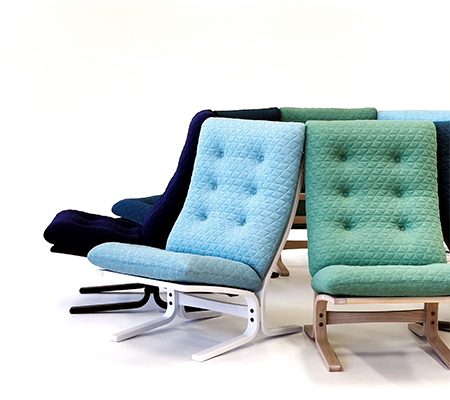
What do people need now, and what kind of living and working styles are they envisioning?
As people’s ways of spending time, housing conditions, and trends change with the times, the elements required of furniture change accordingly. Based on the knowledge and technology we have cultivated so far, and always questioning things that are taken for granted to get closer to an even clearer ideal image, Agio and FUJI FURNITURE will continue to evolve moving forward.
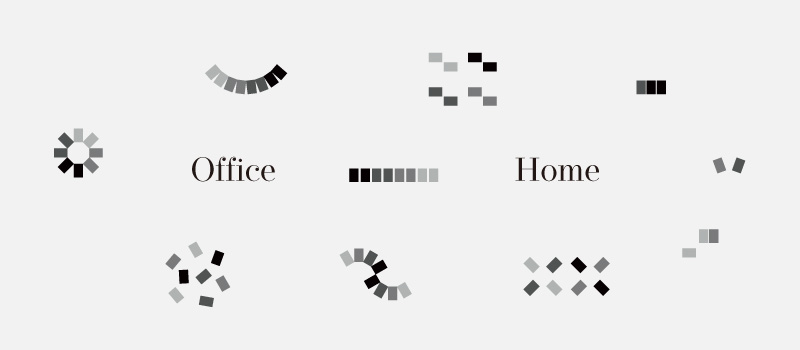
In recent years, changes in attitudes toward life have given many people the opportunity to reassess the value of living and working. There seems to be an increase in people reconsidering where they work and, as a result, wanting to make their homes more comfortable spaces. When we reevaluate Agio, which we had unconsciously categorized as home-use furniture, we realize the possibilities that only a separable type can offer. Here, we propose the versatility of Agio that seamlessly blends into our lives.


A layout like a checkerboard pattern. This arrangement allows individuals to moderately share time with those around them. Due to its compact setup, multiple sets can be prepared even in limited spaces, creating an environment that is easy for many people to use. When arranged back-to-back, personal space can be secured; when arranged facing inward, communication can be stimulated.
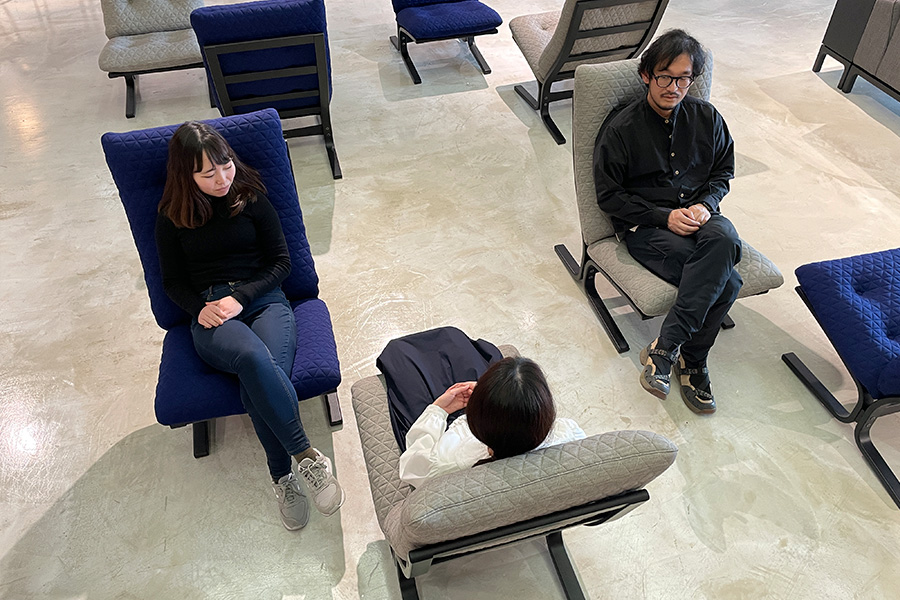
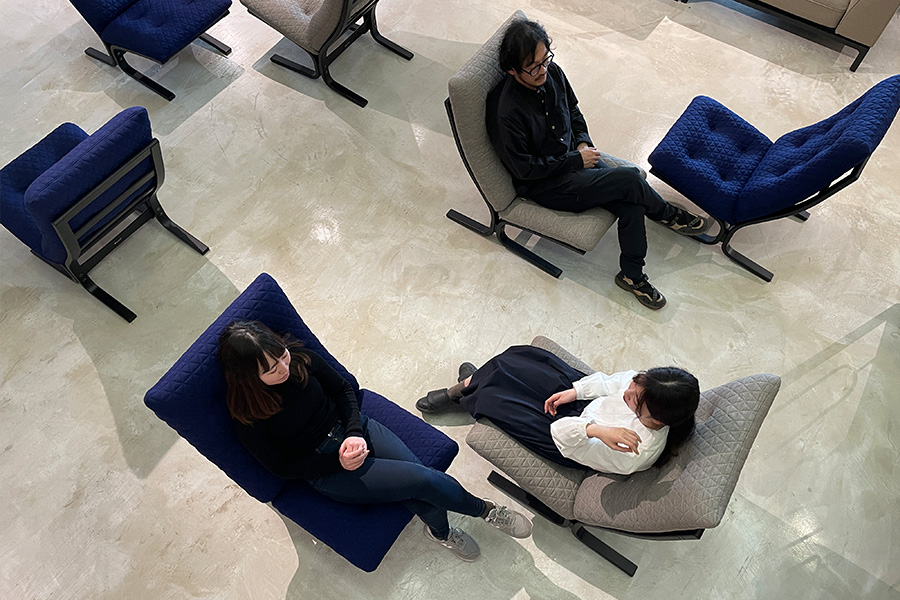
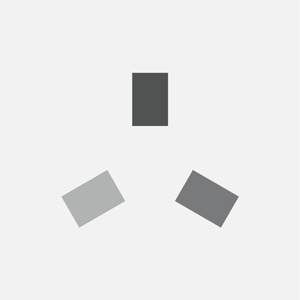

A layout where three chairs are arranged like clover leaves. Each seat has an appropriate sense of distance, and you can feel a sense of openness no matter which way you use Agio. Sitting with your back turned creates a private space where it’s hard to see the person next to you, allowing you to immerse yourself in your own time. Sitting facing inward provides a comfortable environment with a moderate sense of distance that makes conversation easy. Additionally, when placed in public spaces, there’s the advantage that it’s easy to sit in any available seat.
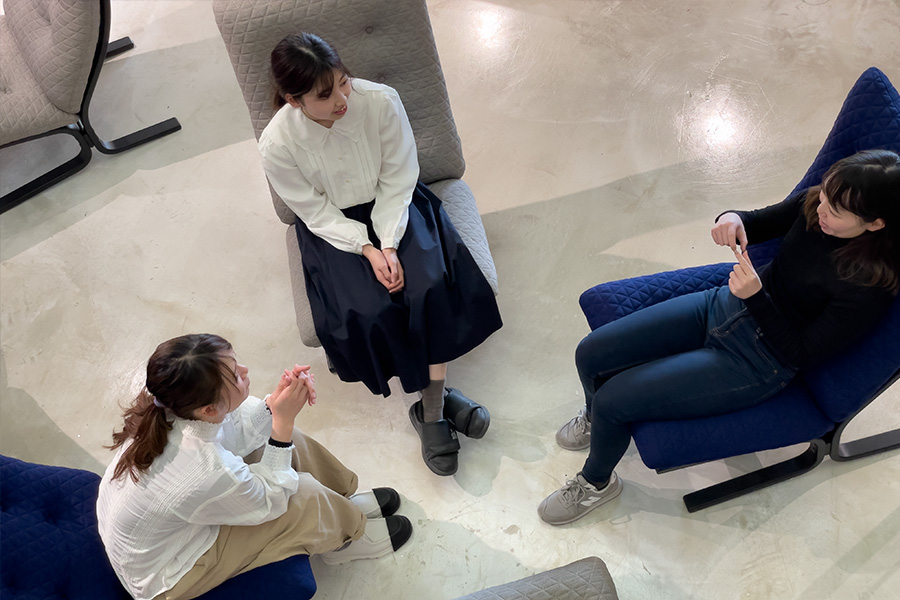
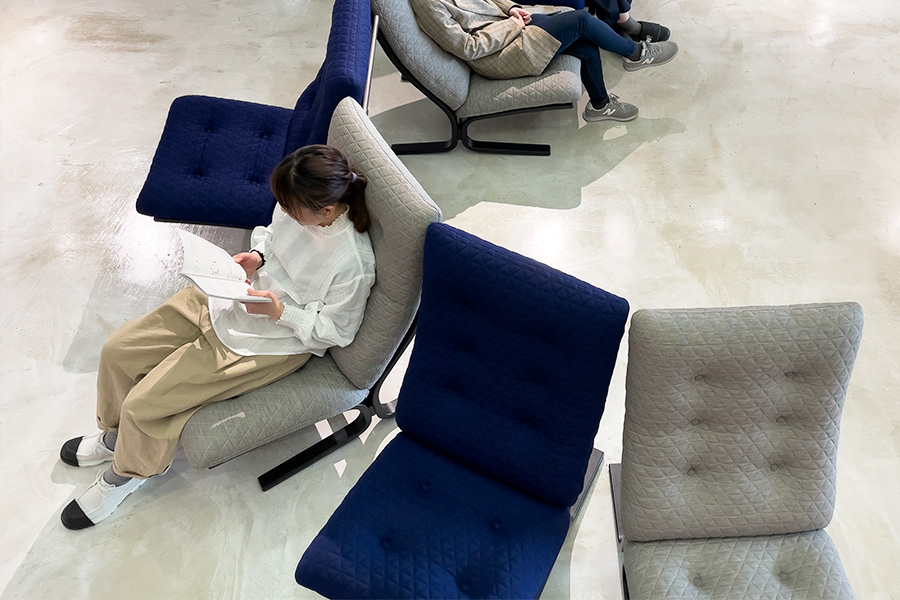


A layout where the chairs cross like a plus sign. Even by adding just one chair to the open / fun layout, it slightly changes the impression that Agio brings. When arranged back-to-back, you can enjoy your own time while still being aware of your surroundings, and it’s a comfortable distance that makes it easy to initiate conversation. When arranged facing inward, you can imagine a space where cheerful conversations flow. Because multiple pathways are created, this layout is also characterized by the ease with which spontaneous conversations can occur.
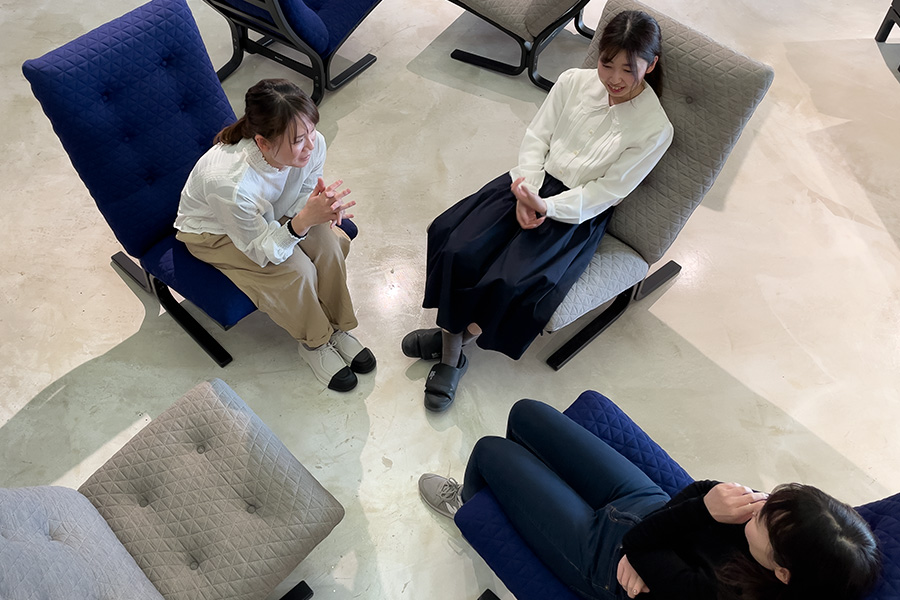
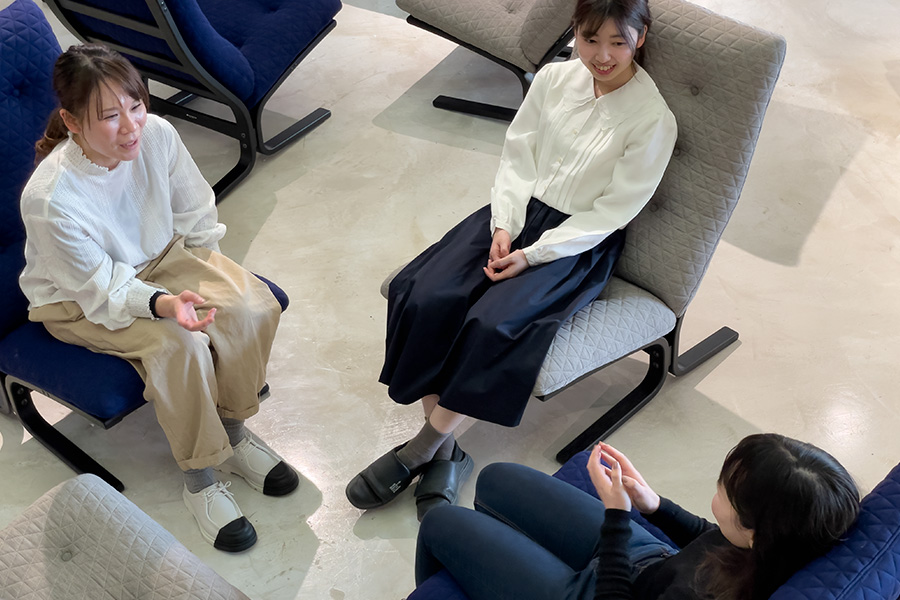


A layout that ensures a private space where you can devote yourself to your own time because you don’t face each other. You can imagine various scenes, from spaces used by many people like study areas or waiting rooms, to use at home in living rooms and other settings. By using side tables, you can enhance individual time or share time with the person next to you, expanding your options. While points of contact with adjacent people are created, not seeing each other’s faces directly reduces tension and allows for a calm experience.
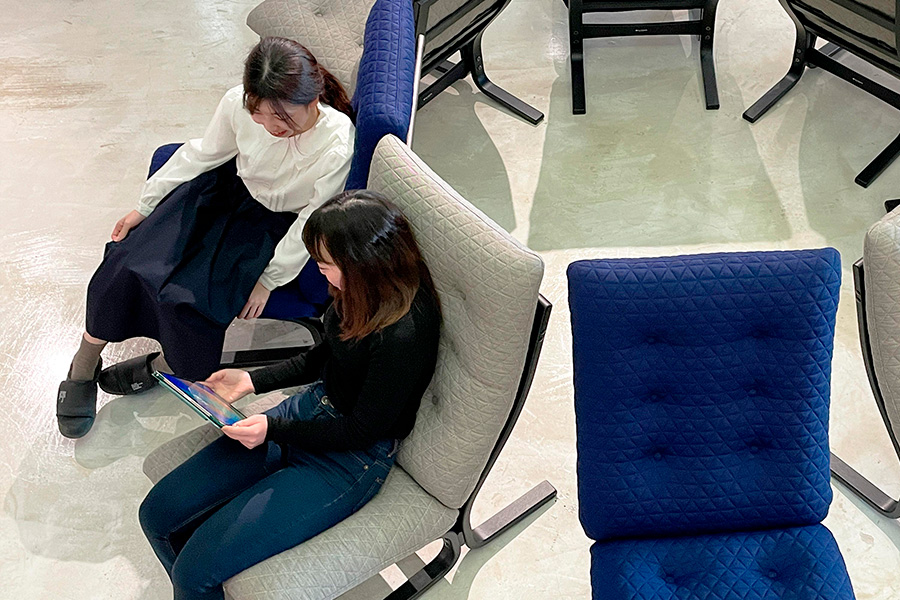
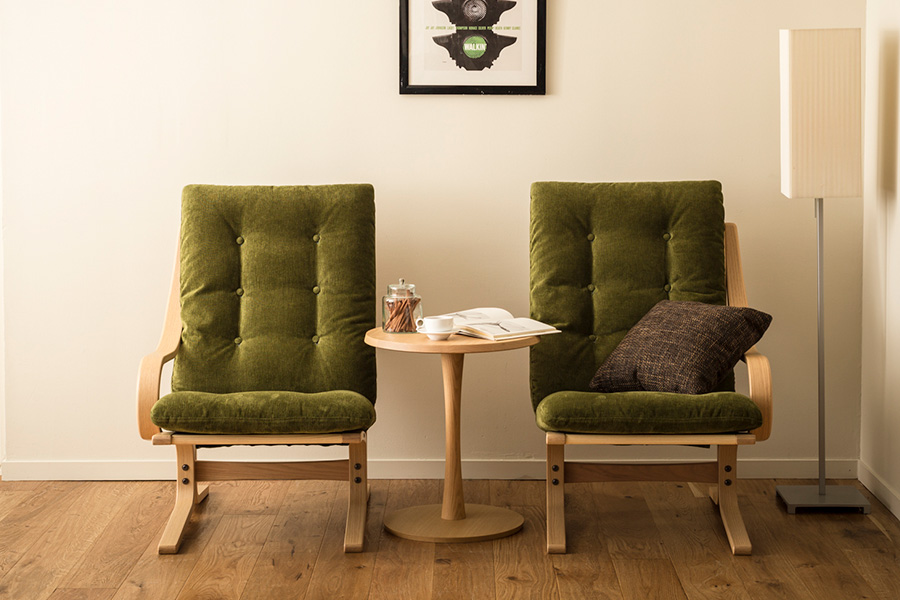


A layout where multiple Agio units are lined up horizontally. Around Agio, a peaceful time flows—enjoying conversations over tea with friends, spending time with family, watching a movie alone at leisure, or lying down on the seat to rest. You can choose to attach arms on both ends and use it as a sofa with arms on both sides, or remove the arms to use it spaciously and luxuriously. You can enjoy comfortable time tailored to your space.
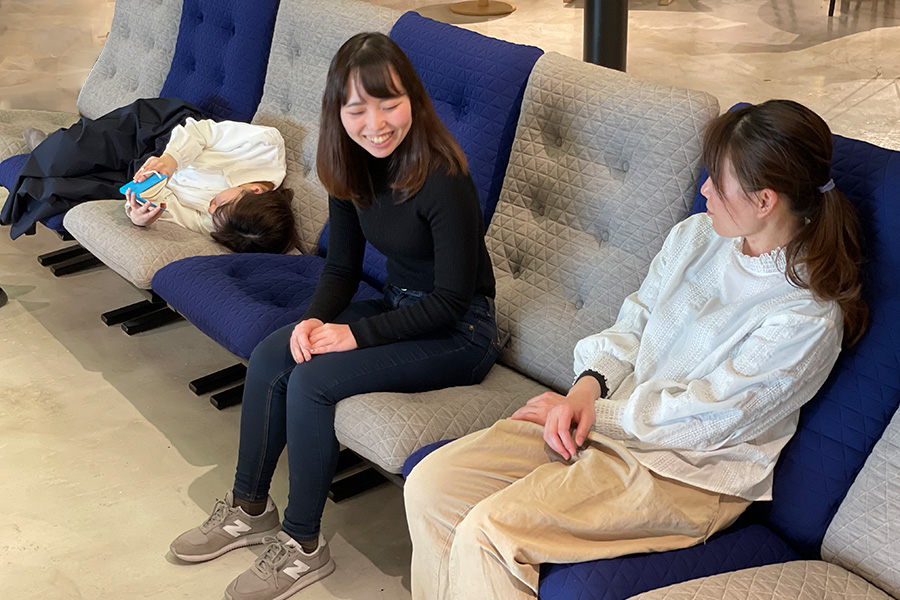
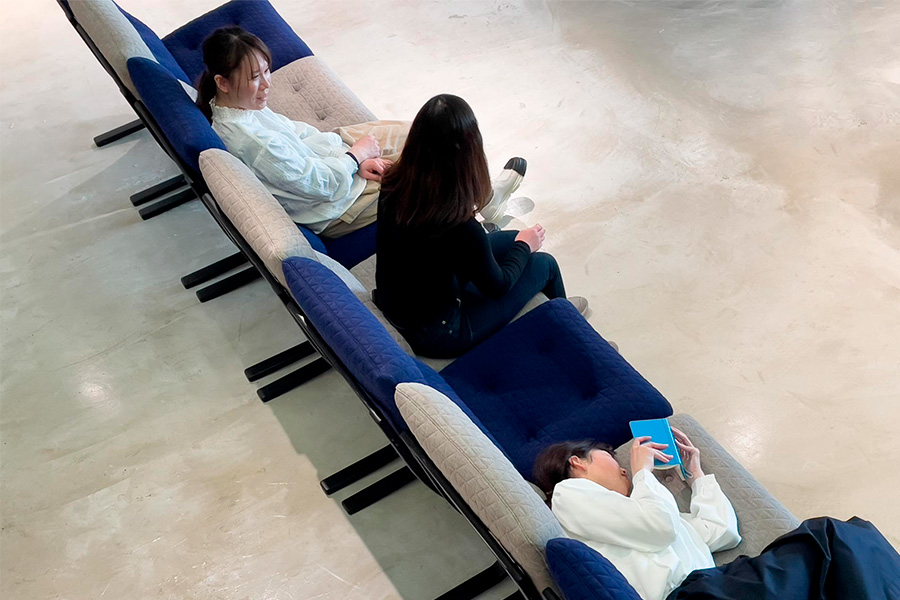
Here, we have introduced five layouts, but Agio can be arranged in any way and transform in various ways depending on the space, purpose, and number of people. With free layouts that make use of Agio’s features such as its lightweight and separable design, we cater to each customer’s lifestyle.
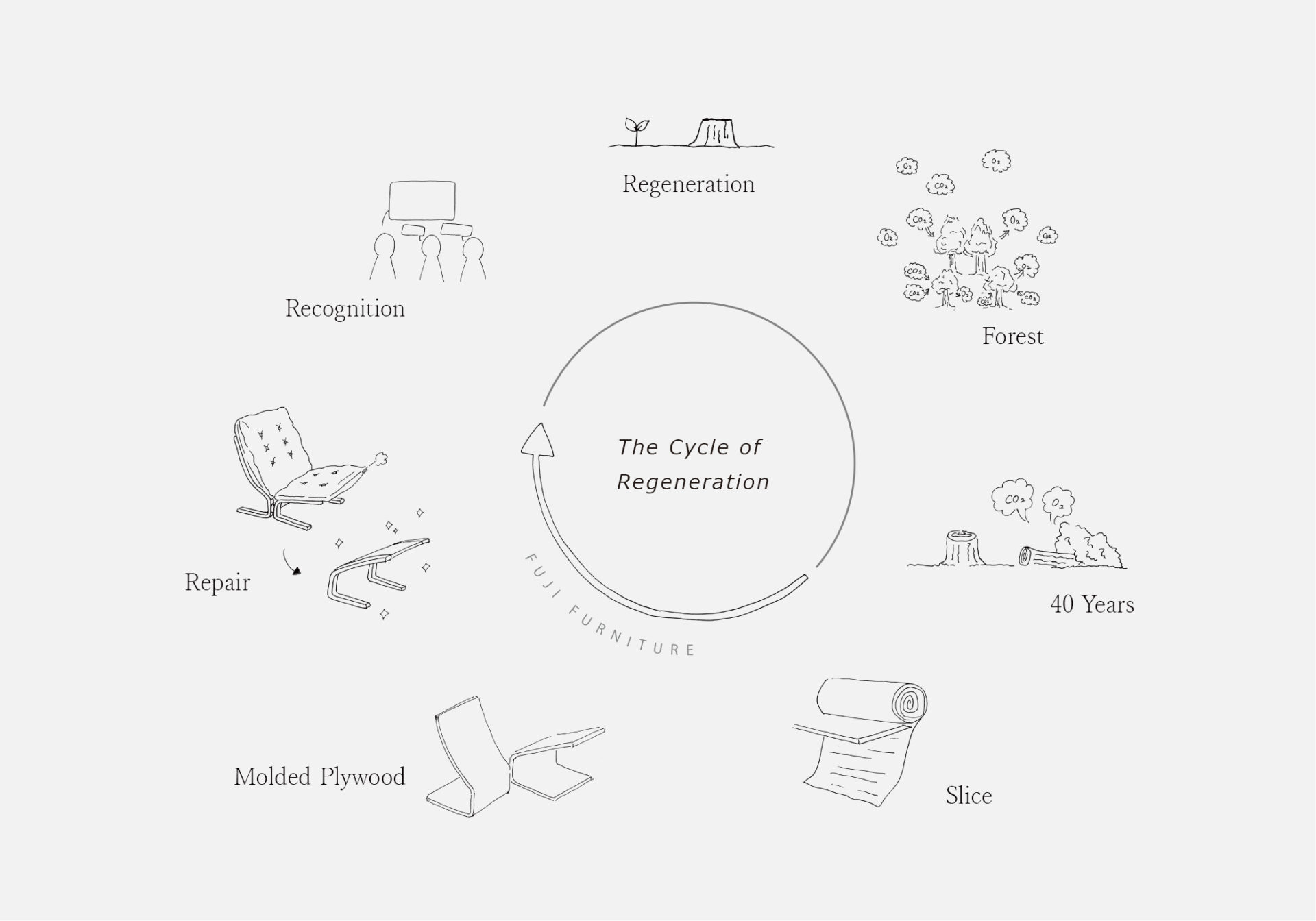
As we move toward a sustainable future, we increasingly see activities like sustainability and the SDGs in all aspects of daily life, indicating a shift in people’s awareness. In recent years, the concept of “regeneration” has been gaining attention worldwide as an idea that goes beyond sustainability and the SDGs. Here, we unravel the cycle of regeneration and its relevance to FUJI FURNITURE.
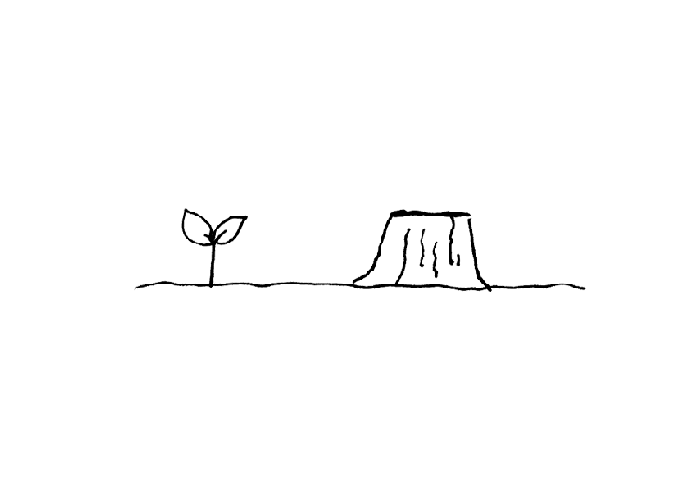
In recent years, environmental issues have been deeply connected to the growing emphasis on the term “regeneration.” Regeneration is a concept that takes a step beyond sustainability. The main goal of sustainability is to maintain the current state—to implement measures that consider the environment and suppress the ongoing spread of negative impacts. However, even as people’s awareness of environmental issues increases and eco-friendly and sustainable activities grow, environmental destruction has become evident worldwide due to modern industrial industries. Consequently, we have ventured into domains where merely maintaining the status quo is insufficient, with global warming and abnormal weather patterns becoming significant concerns.
Thus, the concept of regeneration emerged, looking further ahead than sustainability. Regeneration refers to initiatives aimed at restoration and recovery. It has become important to actively engage in efforts that positively impact the environment to restore degraded soils and marine ecosystems.
In response to the increasingly severe environmental issues each year, efforts and activities are being undertaken to achieve carbon neutrality. Carbon neutrality means “effectively reducing greenhouse gas emissions to zero.” It is the idea of balancing the emissions of greenhouse gases like carbon dioxide—which could not be entirely eliminated in the pursuit of decarbonization—with the amount absorbed by forests.
Therefore, in achieving carbon neutrality, the management and protection of forests are considered to play an important role.
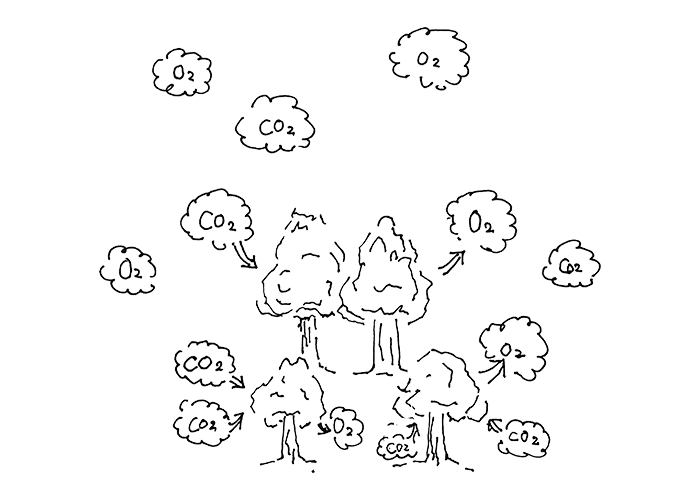

In response to the increasingly severe environmental issues each year, efforts and activities are being undertaken to achieve carbon neutrality. Carbon neutrality means “effectively reducing greenhouse gas emissions to zero.” It is the idea of balancing the emissions of greenhouse gases like carbon dioxide—which could not be entirely eliminated in the pursuit of decarbonization—with the amount absorbed by forests.
Therefore, in achieving carbon neutrality, the management and protection of forests are considered to play an important role.
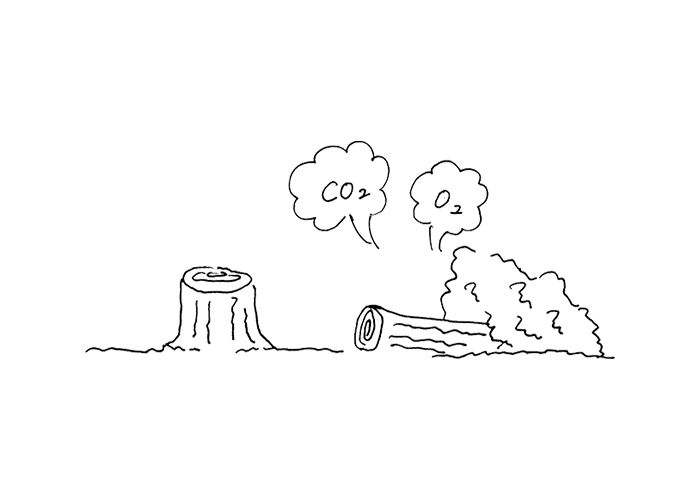
Plants perform photosynthesis by breaking down water (H₂O) absorbed from roots and leaves and carbon dioxide (CO₂) absorbed from the air to produce carbohydrates like starch necessary for growth. The oxygen that becomes unnecessary during production is released into the air, and carbon and hydrogen accumulate within the plant.
It is said that this cycle operates most efficiently in a single tree for about 40 years. Trees over 40 years old are recommended for thinning so that surrounding plants can grow without stress. The thinned trees maintain the state of having accumulated a large amount of carbon they have absorbed so far. If these are incinerated, the stored carbon is released into the air. Therefore, by actively utilizing these timbers, we can suppress the release of carbon into the atmosphere.
When lumbering wood to use as solid material, defects like large knots, scratches, and unfavorable colors are avoided, resulting in a yield—the actual usable material ratio from a single tree—of about 30%, which is low. When using the same material for molded plywood, since the wood is thinly sliced and layered, there’s less need to avoid such natural marks, and the yield can be increased to about 60%, leading to efficient use of resources.
Note: Here, “yield” refers to the volume after processing compared to the original material (log volume).
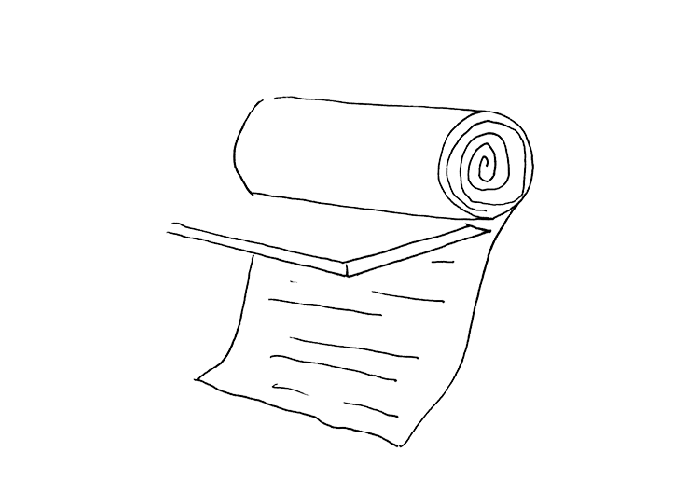

When lumbering wood to use as solid material, defects like large knots, scratches, and unfavorable colors are avoided, resulting in a yield—the actual usable material ratio from a single tree—of about 30%, which is low. When using the same material for molded plywood, since the wood is thinly sliced and layered, there’s less need to avoid such natural marks, and the yield can be increased to about 60%, leading to efficient use of resources.
Note: Here, “yield” refers to the volume after processing compared to the original material (log volume).
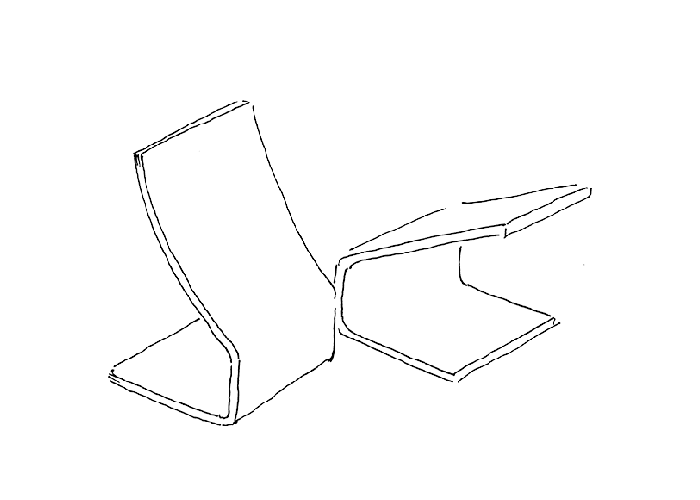
We use thinly sliced veneers as molded plywood.
When manufacturing furniture using solid wood, multiple joints are required, and each joint becomes a weak point in terms of strength. On the other hand, molded plywood consists of continuous parts, so the load is distributed, making it very strong against breakage and deformation. Another feature of molded plywood is that strong parts can be made with minimal materials, allowing us to keep resource usage to a minimum.
In the case of Agio, all frame parts are fixed with bolts and dowels.
Over years of use, if any part of the frame becomes damaged, you can replace just the damaged part. The cushions are separate for the back and seat, and you can replace only one if needed. Additionally, Agio comes in two types: upholstered and coverable versions. With the coverable type, maintenance is easy, and you can also replace only the covers by changing the upholstery.
Since there’s no need to replace the entire frame or cushions, you can reduce the environmental burden while also keeping replacement costs down.
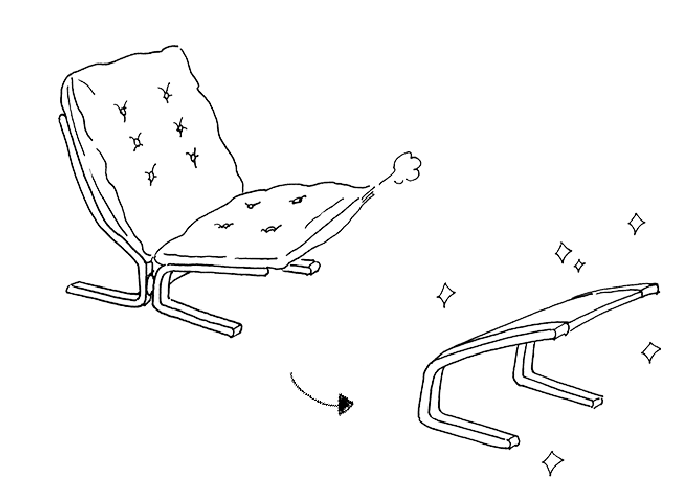

In the case of Agio, all frame parts are fixed with bolts and dowels.
Over years of use, if any part of the frame becomes damaged, you can replace just the damaged part. The cushions are separate for the back and seat, and you can replace only one if needed. Additionally, Agio comes in two types: upholstered and coverable versions. With the coverable type, maintenance is easy, and you can also replace only the covers by changing the upholstery.
Since there’s no need to replace the entire frame or cushions, you can reduce the environmental burden while also keeping replacement costs down.
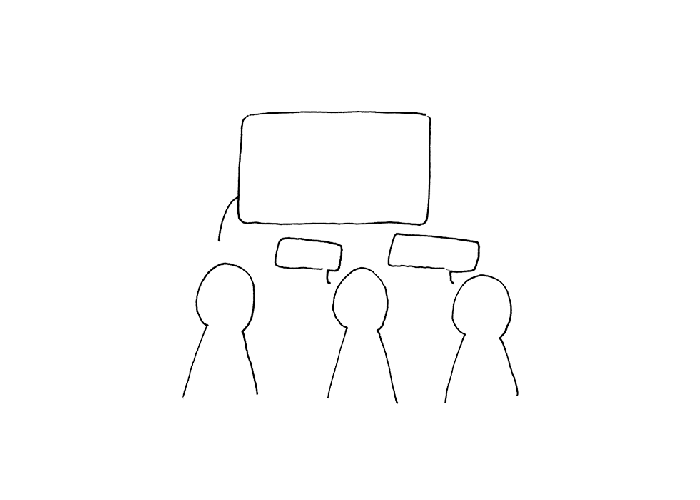
While the cycle of regeneration gains more influence when large organizations like corporations take action, individuals can also participate in this cycle. The first step is to recognize and correctly understand the initiative of regeneration. We believe that as more people think about the environment, individual actions and awareness will change, leading to environmental preservation.
When we consider what FUJI FURNITURE can do regarding regeneration, we believe that connecting the individual efforts we’ve been making—from points into lines—is very important. Aiming for widespread recognition of regeneration activities and their connection to the next generation, we will continue to pursue the best activities that FUJI FURNITURE can offer.
出展商品
肘無ソファ L08310 N
ワイド左肘ソファ L08670H
ワイド肘無ソファ L08670U
ワイド右肘ソファ L08670M
リクライニングチェア P04840A
スツール X02460Z
ロゼッタ L00480(廃番)
詳細は Productsページ をご確認ください。
品番は張り込み仕様の場合 L08310、カバーリング仕様の場合 L08670となります。
*塗装色の品番は以下の通りです。
ブラック:BP(オーク) / グレー:GP(オーク) / ナチュラルホワイト:特別色(オーク) / ホワイト:特別色(オーク) / ライト:LP(オーク)
*張地の品番は以下の通りです。
Triangle 792(TR79) / Triangle 772 / Triangle 932 / Triangle 732 / Triangle 292(TR29)
Remix3 866(RM86) / Remix3 422(RM42)
塗装色の特別色や張り地、価格につきましては Contactフォーム よりお問い合わせください。